-
Posts
4,744 -
Joined
-
Last visited
-
Days Won
119
Content Type
Profiles
Forums
Resource Library
Events
Gallery
Blogs
Store
Community Map
Posts posted by Mayner
-
-
Brilliant work David, an interesting and challenging prototype with its combination of complex curves, large windows and recessed doorways.
-
Or maybe you mean the RSD12? I think Atlas did one of them before...
Yes the RSD12 basically see to have had an RS11 on body on CC trucks, shorter than an RSD15 or SD9 might be short enough or an A Class,
-
-
The K Class were originally introduced in an emerald green livery with ornate black and white lining, in the early 1900s a number were painted in a short lived royal blue livery, the blue was replaced with a grass green from 1905, followed by lined black from 1913. Broadstone started rebuilding the locos with superheated boilers from 1918 the work continued following the amalgamation and the entire class was superheated before Broadstone closed as a railway works. The situation on the GSR in the 1920s was similar to that on the LMS with something of a power struggle between ex-GSWR & MGWR factions. In the 1920s Inchacore under Bazin was sceptical about the value of superheating with the Midland encouraged by f saving took the opposite approach superheating most of its loco fleet. This changed when an ex Midland man Morton took over and a standard range of superheated boilers was designed that could be made to fit nearly all the major ex-GSWR & Midland classes including the J15.
Something I baked earlier. MGWR K Class on left canopy cab saturated boiler with short smokebox. GSR 650 Class on right Inchacore cab superheated boiler with extended smokebox Inchacore style boiler fittings
Anyway back to work & a quick look at the tools of the trade so to peak.1/8” Parallel reamer for boring out brushes and axle bearings, I also have a 3/32” & 2mm for bogie and tender axles. Stainless steel tapered broaches for opening out holes for bearings and rods etc, the disc like thing is a back to back gauge for 21mm wheel sets supplied by Terry McDermott founder of TMD about 20 odd years ago, the section of threaded road with the punch is a London Road Models riveting tool which will see plenty of work later.
Loco chassis with wheels temporarily set up as a test bed for the equalisers. I will probably add some weight and push/pull the chassis around to see how it behaves. I wont fit the motor or detail the chassis until I am happy with the running!
Comparison of OO & 21mm gauge chassis or the dilemmas involved in building a model of an Irish steam loco in OO gauge
OO Gauge chassis with frames under the smokebox wrapper wheelsets inside the firebox.
Mashima 12X20 motor and High Level gearbox allows cab to be kept clear and motor to be hidden inside firebox.
The wheels are Mike Sharman and were salvaged from an earlier model of a D Class in true MGWR fashion.
Comparison of 101 J15 and 650 classes. The MGWR locos appear to have been a tad narrower with a slightly higher pitched boiler, the boilers on the two classes were the same diameter similar length. In real life the two classes were most likely to have crossed paths in Athenry, Claremorris and Sligo and worked trains together on the South Eastern and between Athlone and Portarlington & on the Banagher Branch. Even in CIE days the two systems were operated like separate railways with Midland & Southern engines generally kept to their own territory.
-
RTE Archives
in News
Brings back memories of Army lorries during the bus strikes and the maintenance men being vilified for bringing the country to a standstill. One of the best stories from the era was a production workers strike in a Dublin chocolate factory. A shop stewart brought the worker out on strike without telling the union head office then immediately went off on holidays to Spain.
A those were the days!
-
Funnily enough I will be exploring/researching that particular avenue in the next week or so for someone. Will report back!
I used the truck and guts from the old Athearn SD9 to motorise an MIR whitemetal A Class, really powerful loco good at demolishing wagons and buffer stops. I basically built a fame out of Ks Brass strip and brass section. I managed to shorten the Athearn drive enough to fit in an Class by re-moving one of the flywheels & used the drive from a GP35 in a MIR 141 class.
I am not sure if anyone produces a HO RSD11 but has similar unequal truck centres and maybe short enough for an A Class.
The Proto 2000 SD & GP drives are more up to date direct copy of the Athearn.
-
Hi George
Looks like I wont need to do tutorial, its great to have a second set of eyes looking over the kit. I hadn't gotten around to fixing a tension lock coupler a pivoting arrangement seems to be the way to go.
-
The 2-4-0 was a standard passenger/mixed traffic type on the Midland from the 1870s up to the late 1950. Built the 1890s the GSR was impressed enough with the K or GSR 650 class locos to use them on DSER suburban and main line trains.
The Midland had a policy of replacing or "renewing" its loco fleet every 20-25 years, the K Class were renewed in late MGWR/early GSR days with superheater boilers mainly to improve fuel economy.
The appearance of the engines change dramatically, the traditional MGWR 'fly-away" cab was first replaced with a low roofed GNR style cab and later with a GSWR style cab. Upon superheating the locos received flush riveted smokeboxes, later replaced with pop riveted type in late GSR days.
Information is sparse to say the least, while a GA exists for the Beyer Peacock D Class, it took approx. 20 years to un-earth a MGWR & a GSR weight diagram. Oh the K Class valve gear is said to be different in design to the D, Attock had a fundamental re-think in the 1890s and the motion in his later designs is supposed to be similar to Drummond practice.
I ordered two sets of test etches to in brass build a pair of study models on in Midland & one in later GSR condition. The engraver accidentally supplied another two sets in nickel silver how could I refuse , I might as well build a pair for myself:).
I intend modelling the locos in CIE condition so they can rub side sheets with AEC railcars and possibly even a B141 diesel.
While the body fret is in brass the chassis is in n/s for strength. I was intending to do a how to on assembling the frame but seem to have missed out. At this stage I have fitted the fore and rear frame spacers, motion bracket and a representation of the inside cylinders.
I have built a OO gauge study model with a rigid chassis and Romford Wheels, but I am trying a beam equalisation system on this loco which will be in 21mm to EM standards.
Most suspension systems involve considerable modification to the chassis in fitting separate hornblocks and some form of compensation or springing system. Paul Bernstein a professional NZ modeller advocates equalisation normally with on axle fixed, in this case I an experimenting with all axles floating.
I will give the chassis a trial run once I have the wheels fitted.
-
 1
1
-
-
Does the Hornby model come anyway close to the Burmah Tanker?
Colour scheme is pretty much spot on for the two petrol tank wagons, the wagons were a lot more modern similar to the Airfix tank wagon
-
The tank wagons used by the oil companies were nearly all private owner and separate from railway company stock. The man exception appears to have been the 6 tank wagons built for Burmah in the early 70s.
The Donegal & Swilly each had tank wagons with the railway company owning the underframe & the oil company the barrel.
-
Interesting photo appears to have been taken following closure of the station and the conversion of the junction points to remote operation from Balla !
There is a similar 1955 Richard Casserley photo of 2-4-0 655 arriving from Westport passenger train had grown lot longer 655 was hauling 2 bogie coaches and a 6w brake. Cabin closed signals now controlled remotely from Balla, starting signals at Castlebar end station removed, running loop converted to a siding with the main line protected by trap points
-
A few photos (not the best quality )of the older type of tank wagons around the Point Yard and Tuam.
Irish Shell & BP Wagon East Wall Yard Mid 1990s. Charles Roberts wagon dating from late 1920s.
Silver/light grey body red solebars Type A tank wagon.
ESSO & MEX 202 Point Yard Mid 1980s.
The MEX tanker is for Class A highly flammable traffic Petrol and has two compartments.
Silver tank with horizontal orange stripe along centre of barrel.
The ESSO tank wagon appears to be a fairly modern bitumen tanker the give away is the insulated body with coned ends.
MEX tank wagon Tuam sister to 212 but more modern wagon possibly dating from the 1930s no tie down cables around the dome.
The Joker in the pack TEXACO/CALTEX modern 1960s wagon with anchor mounted tank Light grey tank with red solebars and TEXACO lettering. A modelling challenge with the older CALTEX lettering and horizontal orange stripe grinning through.
The TEXACO wagons were commandeered by CIE in the late 70s & 80s and were used on the Alexandra Road Inchacore fuel oil trains.
-
-
A few more I forgot:
The distinction between railway owned and private becomes a bit blurred Tivoli and most of the mine sidings appear to have been railway owned maintained and shunted by company locos
Tivoli: Texaco siding.
Burmah Oil.
Roofchrome (Pitzer
Cork Harbour Board, the Harbour Board siding was an extension of the Roofchrome siding after the Quigley Magnesite workings ceased.
Foynes: Esso Oil tank farm in area later used for stockpiling coal.
Siding to tank farm on down side. Both closed following opening of Whitegate Refinery.
Harbour siding off turntable on to pier at Western end of station.
Fertiliser Factory siding (late 1950s) sharply curved extension of main running line across road and into factory at Western end of station.
Premier Molasses & Avonmore grain extension of Mogul release road 1980s.
Drumshanbo (C&L) Campbells store
Derrenavoggey (C&L) (Arigna mines)
Wolfhill
Deerpark
Silvermines
Tara.
Dublin Port: Merchants Warehousing East Wall Road
Donnelly's coal yard Lr Sherriff St.
City of Dublin Steam Packet Company (Sidings West side of Spencers Dock)
Gouldings Fetilisers later Coal Distributers 1st siding off Alexandra Rd Tramway
Irish Shell & BP
Texaco
ESSO
Irish Bitumen Distibutors
Asahi
B&I
R&H Hall
Alexandra Basin
Tara
Dublin Port Common User Terminal
The trend away from private sidings appears to be reversing with the like of Daventry in the UK and Dublin Port.
On a smaller scale some industries still use small 0-4-0 shunters for positioning wagons for loading and making up trains for collection.
The Hornby Sentinel diesel http://www.hornby.com/shop/locomotives/dcc-ready-locomotives/r3178-ncb-4wdm-0-4-0-sentinel-industrial-shunter/ would not look out of place shunting in an industrial setting from the 1960s to the present. Maybe if Dublin Port had gone for locos rather than tractors

-
Saw this on RM Web Rapido Trains visit to Chinese factories & talk about a British model.
http://www.rapidotrains.com/blog/2014/01/07/the-twelve-days-of-china/
-
Hardly any private sidings in Ireland Just a few that sprang to mind
Cadbury Rathmore private siding sent out a substantial until closure in the Mid 70s with a daily trip working from Mallow.
Kerry County Council 1/2 mile private siding Lixnaw handled bitumen until closure o the North Kerry.
Cahir Abbey Siding Tipperary County Council bitumen traffic.
Webb Mill Mallow grain later bitumen.
ESB Kilbarry, Ardnacrusha & Portarligton
Thurles private down tailing siding at North end of station lasted until ctc disappeared behind a high stone wall!
Farranfore private siding opened mid 70s serving co-operative trainload fertiliser.
Waterford: Clover Meats down side Rosslare line Abbey Junction.
Bell Lines Frank Cassin? Wharf Abbey Junction
R H Hall Grain Elevator North Wharf.
Waterford Harbour Commissioners North Warf.
Belview
Campile: Co-op siding
New Ross: Albatross Fertiliser & Wharf siding opened mid 1960s:
Athy: Tegral
Blessington Dorans Pit (DBST)
Jobestown: De Selby Quarry (DBST)
Blessington Road: Tallagh Airfield(DBST)
Enniscorthy: St Johns Siding (mill?)
Rathnew: Brickworks sidings.
Wicklow Junction: Fertiliser works & Veha radiators
Wicklow: Harbour tramway.
Portarlington Odlums Mill
Portaoise Private siding up main south of station mill or feed merchants?
Clara: Ranks grain mill (2 sidings bulk grain 1930s onwards)
Cara: Goodbodys Jute Mill
Galway: Dock Branch MGWR?
Leney Brickworks
Ballisodare: Pollexfen Mill 1870-1975?
-
Strange that (GSR) Sentinels only lasted in active service up to 1940, considering their modernity, doing much the same kind of work the G class would do later on.
The railcar version was known to be loathed by crews.
Probably lack of work and difficulty/cost of getting Sentinel parts from the UK during the Emergency, in the UK the LNER withdrew their Sentinel railcars around the same time though the locos remained in service into BR days.
In the UK The Sentinels seem to have been most successful in industrial use being built up to the late 50s many were converted into diesels in the 1960s by Thomas Hill.
Apart from Derry and Dublin the railway companies shunted the ports Londonderry Harbour Comissioners had pair of 0-6-0 saddle tanks both now preserved, Dublin Port & Docks Board used road tractors on the Alexandra Rd Tramway
The NCC, County Down & GNR shunted Belfast docks, the BCDR & GNR building special 0-6-4T with cut down cabs and boiler fittings for Belfast. The NCC & UTA used a small feet of almost steam outline Harland & Wolffe diesel shunters around the docks, in Cork the GSR & CIE used a motley collection of ex T&C loco and small industrial locos to reach parts the ex West Cork, GSWR & Midland tanks could not reach.
-
The industrial locos tended to be off the peg standard designs, most of the industrial steam and diesel locos are available in kit form from Judith Edge and Agenoria. A number of grain mills, factories and oil depots had private siding that could have justified their own locos. Ballysodare, Clara, North City Mills and Portarington once had quite extensive sidings serving mills and other industries requiring a pilot loco for several hours daily
Cold Chon used to use a converted Scammell truck for shunting bitumen wagons at Oranmore
-
Ah the St Albans show some superb layouts and trade stands always used to be a New Year highlight while living in the UK late 80s early 1990s. In those days I always seem to have attended a different exhibition every weekend no wonder I got so little done.
-
There was a paper on the plough train in one of the IRRS Journals during the mid 70s. The plough wagon was based on the last MGWR wagon in railway service, a WW1 surplus bogie well wagon bought in the 1920s, the original bogies appear to have been replaced with more modern BR style Ridemaster bogies.
-
Where is this location?
[ATTACH=CONFIG]11410[/ATTACH]
Great and unusual photo most from the pre 60s era are from the Western end of the station looking eastwards. The steam loco coach and van are on the exchange sidings between the main line and the branch. Perhaps the loco is preparing to attach a through Ballina-Westland Row coach to the rear of the railcars set>
-
I think the first question is whether its worth the effort of modelling the narrow gauge to the correct 3' gauge, whie running Irish broad gauge models on 4'1" narrow gauge track.
9mm gauge using Roco or Liliput rtr locos and stock before moving on to kits or scratch building is probably a better option than the more correct 12mm gauge to get something running. While the public lines were built to 3'' gauge a number of 2' & 2'6" gauge industrial and forestry lines were built some of which used off the peg British and Continental locos and stock.
Parkside-Dundas, Peco and other manufacturers produce OO9 loco, coach and wagon kits some of which are based on or similar to Irish locos and stock. Most of the locos are relatively simple whitemetal body kits that fit on rtr N Scale chassis
There are limited rtr options or donor chassis suitable for 12mm gauge. Branchlines and Backwoods Miniatures produced a number of loco, railcar and coach kits about 20 years ago, these were fairly complex brass and whitemetal kits. Chassis assembly is best described as watchmaking. Bemo produce high quality Swiss & German HOm locos and stock best stored in a safety deposit box than under the layout.
-
One other thing, surely if WiFi control takes off in any way it will need the same NMRA guidelines to provide some small measure of standardisation across the different manufacturers?
I doubt that the DCC manufacturers would agree to a common standard for a Wi Fi interface with their control each manufacturer jealousy guards their own control interface, there is a lot of money in selling throttles.
Most RC systems are based on a thottle based transmitter and a fixed or loco based receiver. The Airwire system http://www.cvpusa.com/airwire_system.php is a DCC based system that uses a radio receiver to control a DCC receiver in the loco.
Visiting operators with DT 400 throttles and the large number of walk around layouts in the US with Digitrax systems is said to be the largest barrier to development of control systems.
Although Digitrax developed a Palm Pilot/Loconet interface about 10 years ago this appears to have been dropped with operators apparently preferring conventional throttles.
I suppose the big question whether anything is gained by interfacing RC with DCC as in the Airwire System or a simple RC system like Aristocraft or RCS is more effective.
-
By the time I was interested in the Irish Rail scene the Park Royal's were a no go in Kerry. Did have a trip on them on the Limerick Shuttle but don't remember much about them. What is the difference between the mainline and suburban versions?
The Wanderer.
The main line had toilets, the suburban had bench seats with their backs to windows in the vestibule compartment at each end.
.png.c363cdf5c3fb7955cd92a55eb6dbbae0.png)

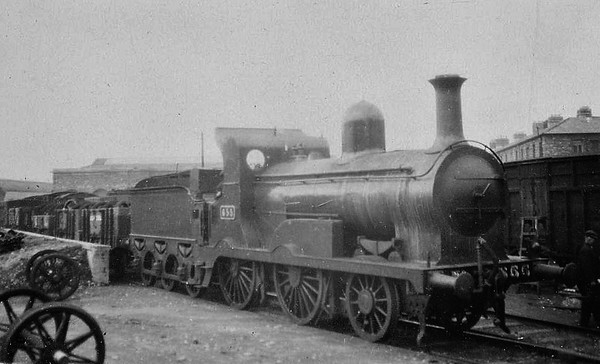
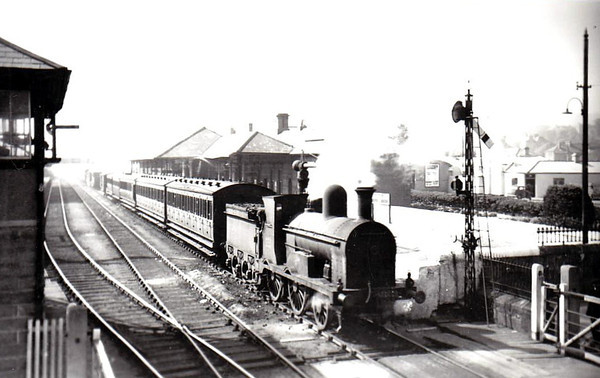

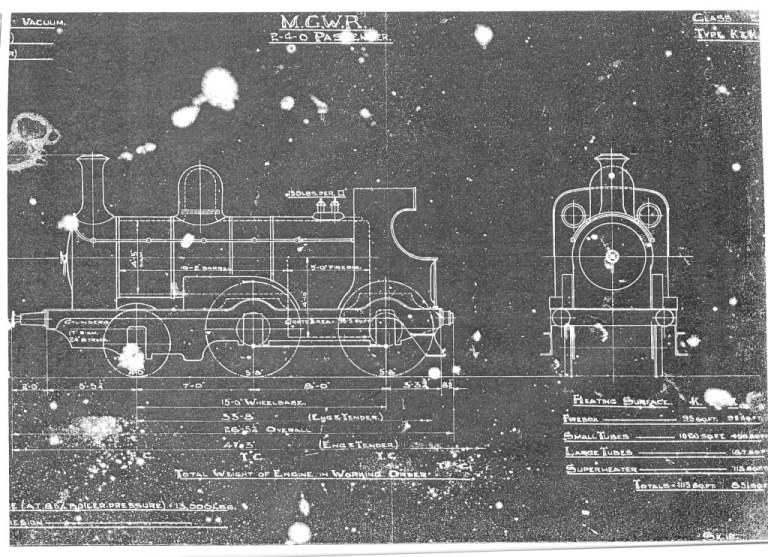
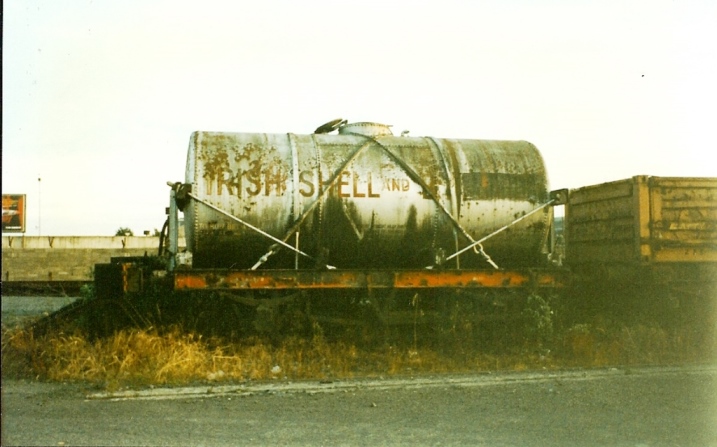


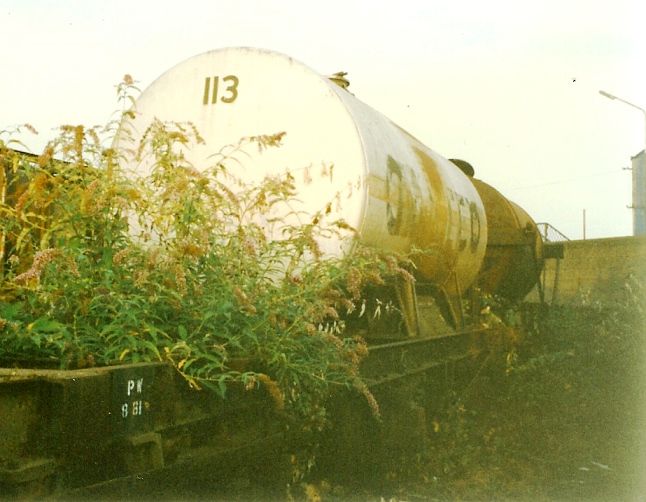

Patricks Layout
in Irish Model Layouts
Posted
You can nearly feel the frost in the air and hear the sound of the B141 for mlles around as she works the beet special up to the tunnel.